Waste not, want not
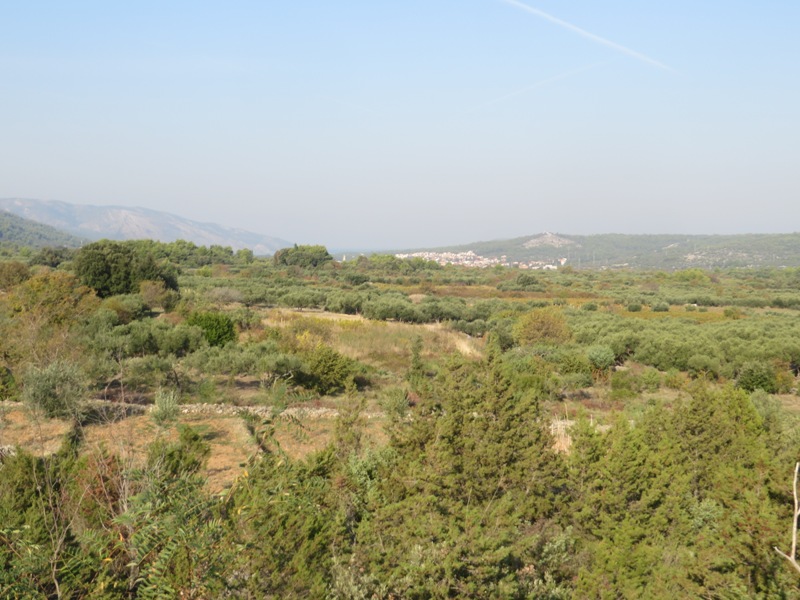
This week: Waste not, want not; Moving in; Time;
With another warm, fine and sunny week, it’s been a pleasure working outside, apart that is, from restarting the daily irrigation programme.
The rain of two weekends ago was most welcome, but not sufficient to break the summer drought and whilst some of my plantings have clearly benefited from the 40 litres of rain per square meter, everywhere is once again parched and dry to beyond a spit deep.
Waste not, want not…
The good weather has meant that I have finished the woodshed.
I had to buy additional screws in the middle of the week because I had run out, but that delay apart, I have made steady progress.
The frame was not difficult to make and fixing some substantial brackets to large stones went well.

With the uprights in place, I started to fix the side cladding, using sheets of rolled aluminium that came off the original roof over the patio area.

The uprights were all pieces of floor timber which were removed during previous building work and the cross members were old floor boards which had not been ravaged by wear, time or insects.
The only new items were the various screws and fixings. Everything has been screwed together rather than nailed, so should any piece ever need replacing in the future, it can be removed with relative ease.
I also used stainless steel TORX screws just for good measure.
I do practice and believe in “waste not, want not“. So while I have kept the good galvanised nails I used in constructing the temporary shed three years ago, the rusty nails are the only things which have been binned. As much material as possible is recycled or re-purposed.

There were several medium lengths of timber from the beams which were left over that I will use to construct some compost bins.
Wooden off-cuts have been saved, to go into the wood store for use later in the year, so almost nothing has been wasted.
I need to get some hinges next time I go to Bauhause, for the doors which came from the big Konoba, as they will nicely cover the front of the wood shed, but that apart, it is finished.
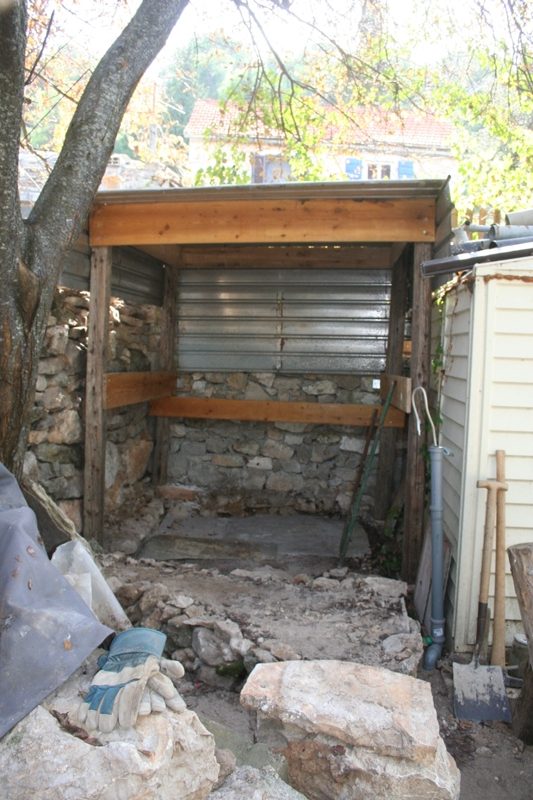
Moving in
On Thursday afternoon, I moved the firewood which had been in the old store, then on Friday I started to cut the pile of small branches, so I have a ready supply of timber for the winter.
This was the temporary wood store I built a couple of years ago.

Now removed, there is work to be done on the wall and clearing the jungle up to my boundary with some bits of rusty iron sheet to be disposed of too.

All told, the new permanent wood shed will hold 5 cubic metres of cut timber and being weather proof, can be filled early in the year, then the timber can dry, so it has a low moisture content when the time comes to light the wood stove.
I started cutting my supply of small branches on Friday.
These were too big to go into the wood shredder, but not worth staring the chain saw to cut, so I used my bushman saw and cut them by hand.

They have been outside for two years and have been under a plastic sheet, so are completely dry.
Being small in diameter, the will burn quite quickly in the wood stove, but will give out quite a lot of heat, so it’s worth the effort to cut them.
Were it not for the need to complete the working area outside the sheds before the winter rains start, I might have waited, because wood cut by hand warms you twice over.
Once when it is being cut, and again when being burnt.

I cut around half the pile and started on the last round on Saturday.
I finished the last cut on Saturday afternoon and stacked all the cut pieces in the wood shed.

There is almost a cubic meter of cut wood from the pile, now it is neatly and closely stacked.
For once I have actually finished a job on time, meaning I have a clean start next week on the walling and completion of the working area outside the garden sheds.

I came across a beautiful Lappet Moth case when I was taking timber out of the old store.

I have yet to see an actual Lappet Moth here, but because they mimic dry leaves, they are extraordinarily difficult to spot.
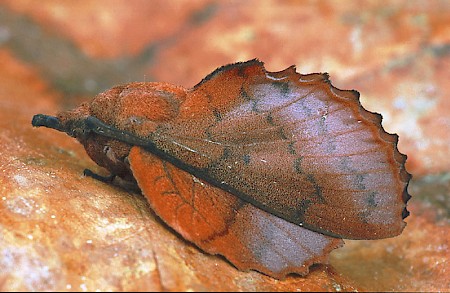
However I have come across several of the cocoon cases which the caterpillar spins as it hibernates over the winter, to emerge as a beautiful adult in the spring.
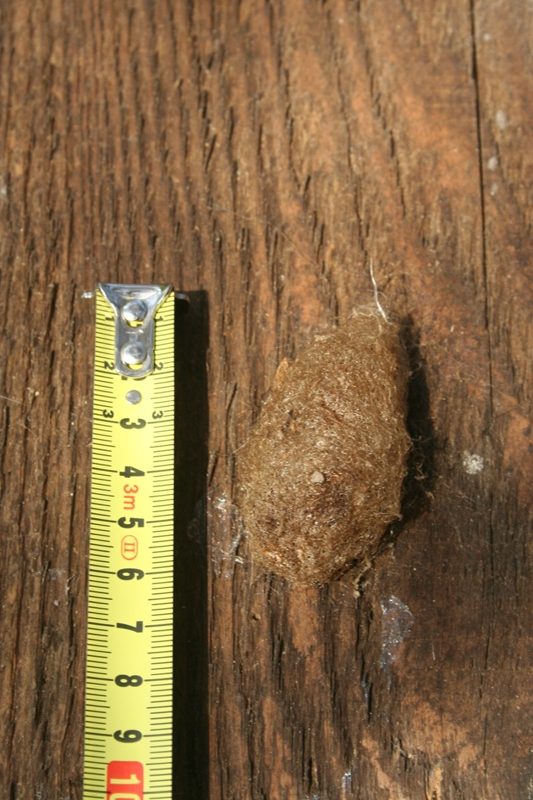
At 6 cm long and 2.5 cm in diameter, the case is quite large – like the moth inside. It was relocated to a place of safety inside the new wood shed.
Time
The nights are really drawing in now.
By 6pm I need a light on in the study and next weekend the clocks change, going back one hour. Although this might be for the last time.
The European Union has proposed that countries remain on the same time all year round, because of the adverse physical effects that are caused by moving forward by one hour at the end of March and going back one hour at the end of October.
There are 24 time zones, twelve after the Greenwich Meridian, and twelve before.
But not everywhere is exactly x hours ahead of or behind UTC (GMT). For example the whole of India is three and a half hours ahead of UTC.
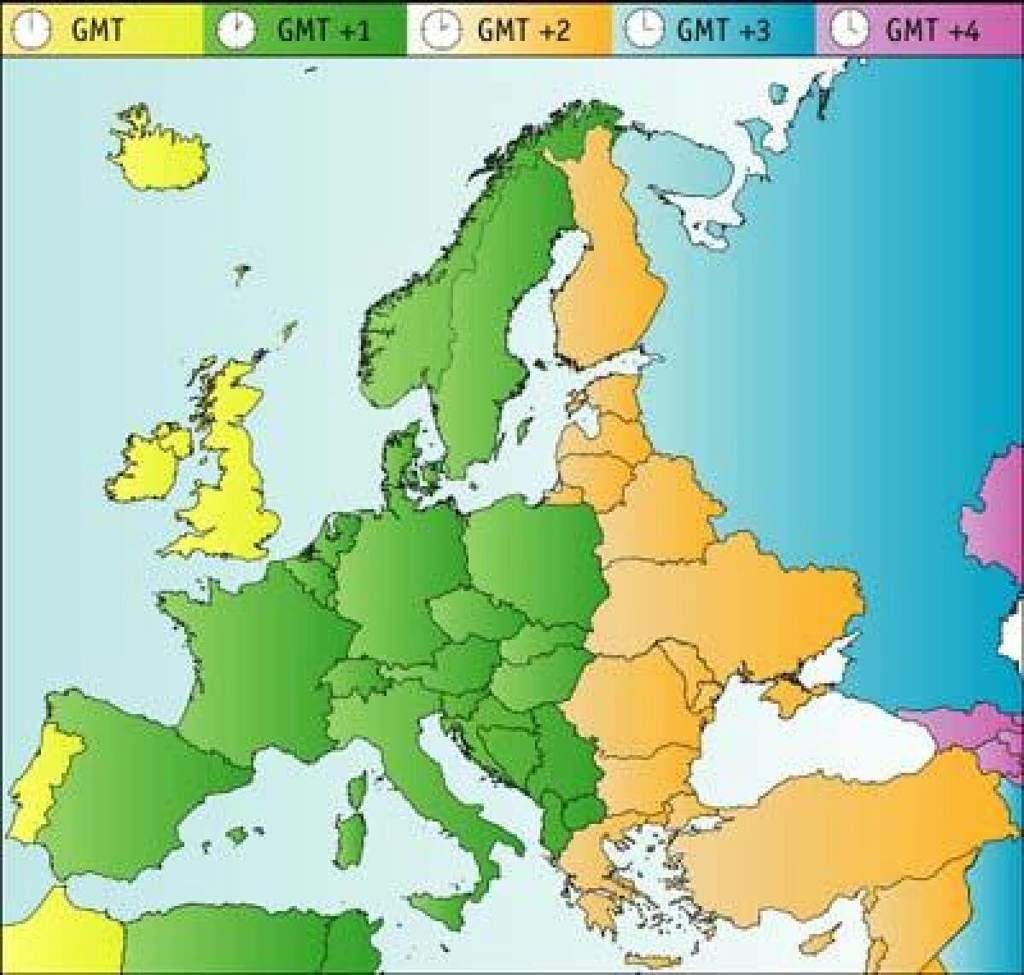
If every time zone was of equal size, each would be 15 degrees of longitude wide, but they are not.
Here in south East Europe, we are one hour ahead of UTC/GMT.
But the degrees of Longitude are like segments of an orange ( or one of my Mandarin) – they are wide at the equator and get closer towards the north and south poles.

This is a conical projection of Europe and Africa onto a flat piece of paper to show what I mean. The zero Meridian which passes through London is in the centre.

The single Central European Time Zone runs from 22 East to 5 degrees west, at the tip of North West Spain, so is is across 27 degrees of longitude.
If there was a constant 1 hour to 15 degrees, there would be two European time zones.
As it is, Sunrise and Sunset in Belgrade today is 07:02 – 17:50, but Cherbourg is 08:36 – 19:08 and Santiago de Compostela in Northern Spain sunrise is 08:54 and sunset 19:45, whilst here in Dol it is 07:14 – 18:04.
So all four places have almost the same day length, but at the eastern edge of Central European Time, sunrise is more than an hour and a half earlier than at the western edge.
During the summer here in Dol, we are about one hour ahead of the sun time (the time when the mid day sun is directly overhead), whilst in winter we are almost perfectly aligned with sun time.
Very few people seem to like moving the clocks around, and there are a number of countries and even some US States, like Arizona and Hawaii that remain on the same time all year. It isn’t helped by the fact that the clock changes take place on different dates in different countries!
The further north you go, the greater the disparity between the summer and winter sunrise and sunset times, and it is in these countries where the most difficult conversations will have to take place about time.
In the meantime, the EU has asked all countries to discuss fixing time to be the same all year round.
There is an argument for Western Europe to be in the UTC zone, along with the UK, and eastern Europe remaining in CET.
And with that thought, it is time for me to sign off for another week. NRC